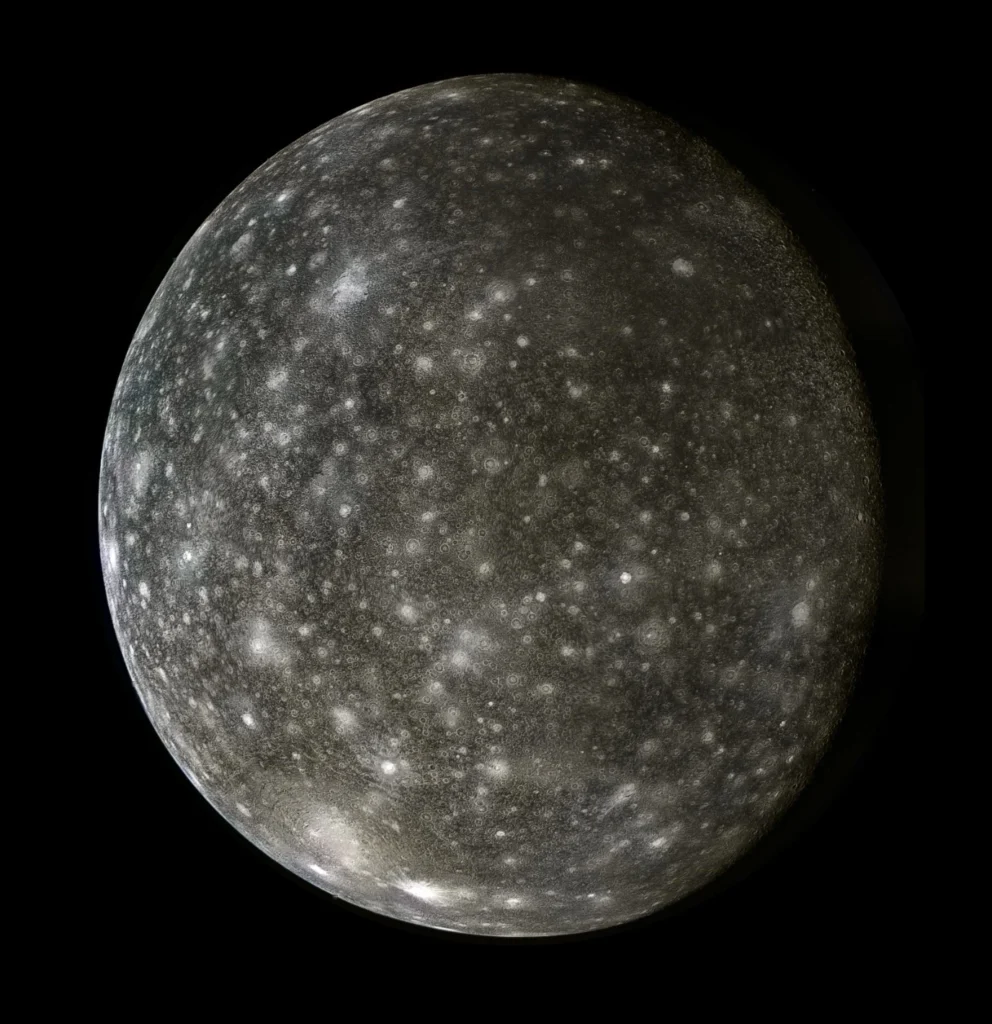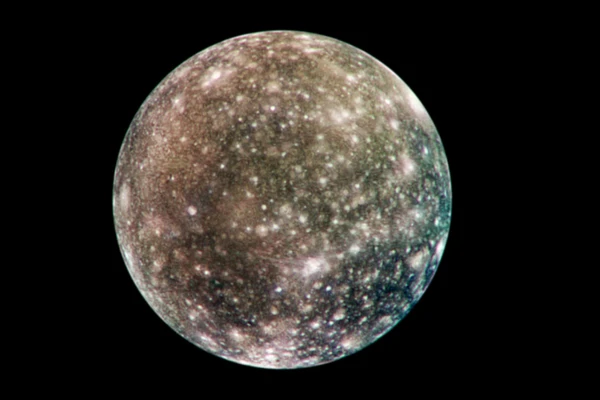: An international team of scientists, including from India, has discovered strong evidence indicating the presence of ozone on Jupiter’s moon Callisto.

About the discovery:
- The detection of ozone (O3) on Jupiter’s moon Callisto emerged during the study of the chemical evolution of “SO2 astrochemical ice”.
- SO2 astrochemical ice is ice primarily composed of sulphur dioxide (SO2) in the presence of ultraviolet irradiation.
- This discovery provided insights into the chemical processes and composition of Callisto’s surface.
- Through analysis of UV absorption spectra from irradiated ice samples, the team identified a unique signature indicating the presence of ozone.
About Ozone:
- Ozone is a highly reactive gas made up of three oxygen atoms bonded together.
- It can be found in the Earth’s upper atmosphere (stratospheric ozone) and lower atmosphere (Tropospheric ozone).
- It is both natural and man-made.
- Ozone can have both positive and negative effects on life on Earth.
Stratospheric ozone:
- It is located in the stratosphere, between 15 and 30 kilometers above the Earth, acts as a protective shield.
- The ozone layer plays a crucial role in the Earth’s atmosphere by completely absorbing ultraviolet-B and ultraviolet-C radiation, thus protecting life on Earth from its harmful effects.
- Ultraviolet radiation, particularly ultraviolet-B and ultraviolet-C, can damage DNA, trigger mutations, and increase the risk of skin cancer and cataracts in humans.
- Ozone layer depletion can have serious effects on human health and the environment.
- However, since 1986, there has been a significant reduction in the consumption of ozone-depleting substances (ODS), largely due to the 1987 United Nations Environment Programme (UNEP) Montreal Protocol.
Tropospheric ozone:
- Tropospheric ozone, also known as ground-level ozone, is a trace gas in the troposphere.
- It is a short-lived climate pollutant that can remain in the atmosphere for weeks to hours.
- Inhalation of ozone can react chemically with biological molecules in the respiratory tract, leading to adverse health effects.
- Tropospheric ozone is created by chemical reactions between volatile organic compounds(VOCs) and oxides of nitrogen (NOx).
- These reactions occur when pollutants from sources like cars, power plants, and industrial boilers react in the presence of sunlight.
- Tropospheric ozone is the third most significant anthropogenic greenhouse gas, following carbon dioxide and methane.
- It absorbs infrared radiation (heat) emitted from the Earth’s surface, thereby reducing the amount of radiation that escapes into space.
About Callisto:
- Callisto is one of Jupiter’s largest moons and the third-largest moon in the Solar System after Ganymede and Titan.
- Jupiter has 95 officially recognised moons.
- Callisto, despite being as big as the planet Mercury, has less than half its mass.
- Primarily composed of water ice, rocky materials, sulphur dioxide, and organic compounds, it stands out for its unique composition.
- These characteristics position Callisto as a potential candidate for supporting life beyond Earth in the Solar System.
- Callisto’s heavily cratered surface suggests a long history of impacts from asteroids and comets, possibly making it the oldest surface in the Solar System.
- It also lacks the extensive seismic activity seen on some of Jupiter’s other moons, such as Io and Europa.
- Callisto’s geologically inactive surface indicates long-term stability, which could be crucial for preserving any subsurface ocean or potential habitats beneath its icy crust.
Ref:Source
| UPSC IAS Preparation Resources | |
| Current Affairs Analysis | Topperspedia |
| GS Shots | Simply Explained |
| Daily Flash Cards | Daily Quiz |

